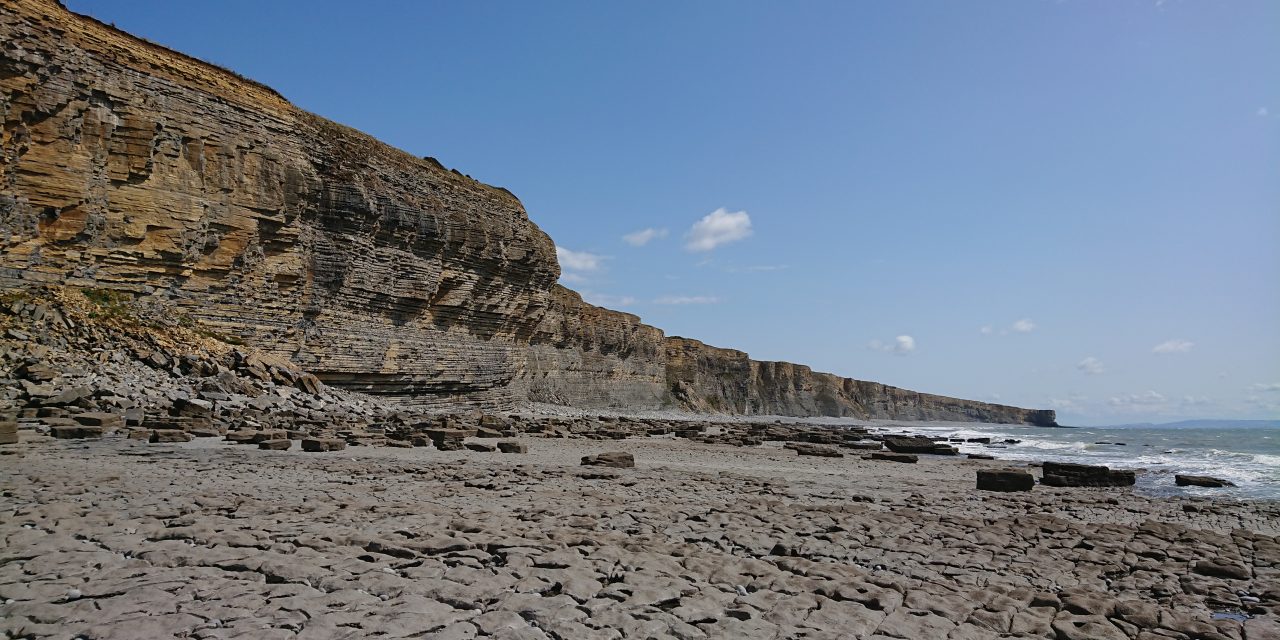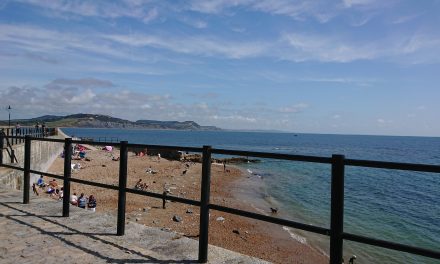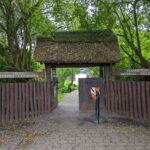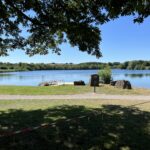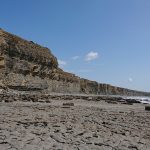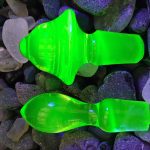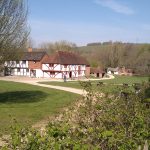This article contains affiliate links. To find out more about affiliate links click here.
Monknash Beach, also known as Cwm Nash, is a stretch of coastline in South Wales located between Monknash and St Donats in the Vale of Glamorgan. It is a designated site of special scientific interest that forms part of the Glamorgan Heritage Coast.
Monknash Beach is one of the best beaches in the area. However, getting there does require a little bit more effort than some of the other beaches in the region.
To get to the beach, you need to take a short walk along a tree-lined path that follows Nash Brook all the way to the beach. The walk is very scenic; keep an eye out for the post-medieval ruins of the Blaen-y-cwm Corn Mill, which you can explore along the way.
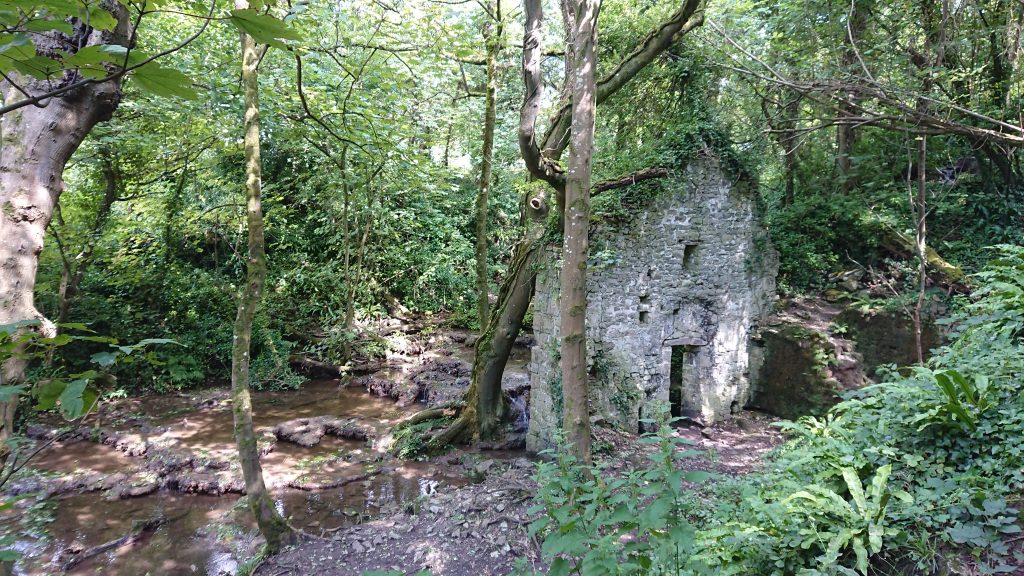
What to expect from our article
- 1 Weather in Llantwit major
- 2 Monknash skeletons
- 3 Where is Monknash Beach?
- 4 Does Monknash Beach allow dogs?
- 5 Is Monknash Beach accessible?
- 6 Is there parking at Monknash Beach?
- 7 Are there any on-site facilities at Monknash Beach?
- 8 Safety advice for visiting Monknash Beach
- 9 Other beaches near Monknash
- 10 Things to do near Monknash Beach
- 11 Places to stay in Monknash
Weather in Llantwit major
Monknash skeletons
You may have heard of Monknash as it has recently been in the news. Erosion of the cliffs above the beach revealed bones sticking out of the side of the cliff. In 2019, more bones were discovered after cliff erosion.
Archaeologists spent eight days excavating the cliffs, where they discovered the skeletal remains of at least six people. Carbon dating showed the remains were from the late 16th or early 17th century.
This is not the only time that human bones have been found at Monknash; bones were first found in 1982 in the form of a long bone, and then again in 1990, a piece of skull was found.
Three years later, excavations uncovered three adults who had been buried in a line running east to west. In 2011, two femurs were also found sticking out of the cliffs.
This location has a long history of shipwrecks and burials, so it is not known to whom the bones actually belong; who knows, maybe they were those of monks or long-forgotten pirates.
The Glamorgan Gwent Archaeological Trust published this report in 2012, in which they came to the conclusion that the burials found on the cliffs at Cwm Nash probably happened between 1485 and 1901. see the full report here.
Where is Monknash Beach?
Monknash Beach is located in the Vale of Glamorgan, south Wales, between Monknash and St Donats. CF71 7QQ. The beach sits on the edge of Blaen y Cwm Nature Reserve.
Does Monknash Beach allow dogs?
Yes, you can take dogs to Monknash Beach. The local Plough & Harrow pub is also dog-friendly if you want to stop off for a bite to eat.
Dogs are also allowed at the following beaches:
- Nash Point
- Ogmore-by-Sea
- Summerhouse Bay
- The Leys, Gileston
- Fontygary Bay
- Porthkerry
- Jacksons Bay
- St Mary’s Well Bay
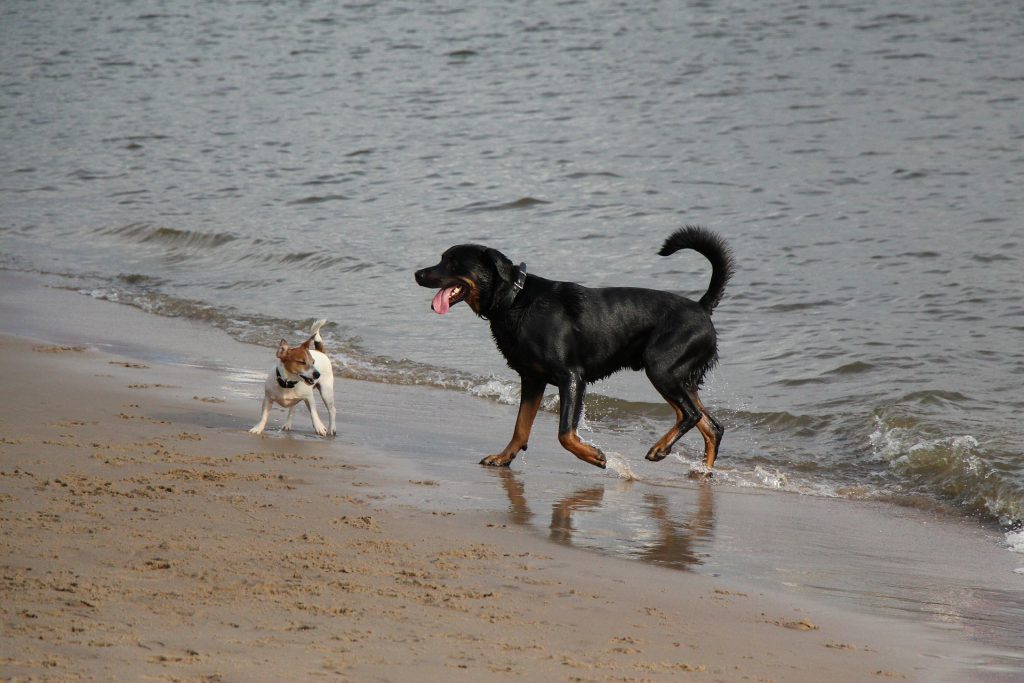
Is Monknash Beach accessible?
No, unfortunately, Monknash Beach is not accessible. To get to the beach, you need to walk down an uneven, muddy path and climb over a couple of stiles.
Is there parking at Monknash Beach?
Yes, there is parking available in a nearby field. It costs £3 to park all day. There is an honesty box for payment, which is located at the entrance gate.
Are there any on-site facilities at Monknash Beach?
No, there are no facilities at Monknash Beach.
Safety advice for visiting Monknash Beach
Check the tide times before you set out, especially if you plan to walk along the beach or spend time in the smaller coves. The tides along this coastline change quickly, giving very little time to reach safety. You can install an app on your phone to check tide times before setting off.
The history of fossils found in this area makes the cliffs here extremely fascinating, but they also present a significant danger to the public. Rocks can fall off the cliffs at any time with no prior warning. This particular beach is also prone to cliff erosion, where tonnes of rocks can slip at any time.
Always be aware of what is going on around you, and for your own protection, steer clear of the cliffs as much as possible. Climbing, pulling loose stones or fossils, sunbathing, or walking near the cliff face should all be avoided.
Other beaches near Monknash
Nash Point
The beach at Nash Point is rocky, and access to the beach isn’t great, but it offers breathtaking views of the coastline. It is also home to a stunning lighthouse that is occasionally open to visitors. Nash Point is great for dog walkers, families, and fossil hunters.
Facilities
There is the charming Clifftop Cafe, where you can buy hot food, hot and cold drinks, snacks, and cakes. Camping is available in the field next to the café for a fee of £15.00 per vehicle, per night. However, if you do wish to camp there, you do need to book in advance. Parking costs £3 per day.
Llantwit Major
The beach is mostly rocky, with some sandy stretches at low tide. It is easy to access, but can be challenging for people who have mobility issues because the rocks are typically quite slippery. a great location for fossil hunters, families, surfers, and dog walkers.
Dogs are not allowed on the beach from May through September. It is free to park.
Facilities
There is the beach cafe on the beachfront that is offering hot food, snacks, ice cream, and hot and cold drinks.
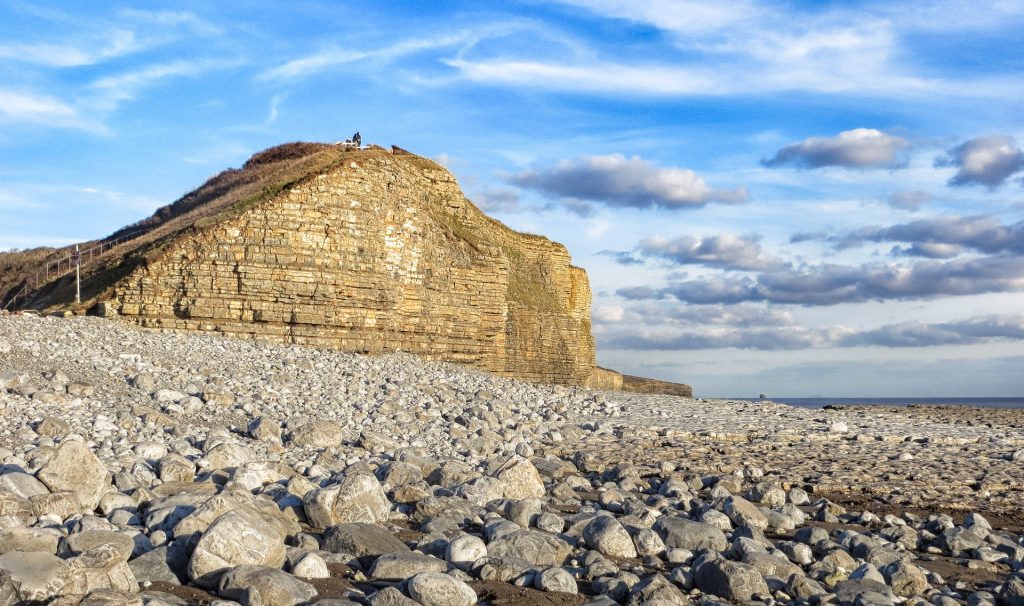
Southerndown (Dunraven Bay)
The beach at Southerndown, also known as Dunraven Bay, is predominantly sandy, but there are some rocky areas that are exposed when the tide is out. This beach is a popular spot for surfing, canoeing, and swimming. great for families exploring the rock pools. It is also quite popular for fossil hunting. Dogs are not allowed on this beach from May 1st to September 30th.
Facilities
There is a small shop on site that sells drinks, ice cream, buckets, spades, and other related items. Parking is £5 for the day in the bottom carpark or £1 per hour in the top carpark.
Things to do near Monknash Beach
St. Donat’s Castle
People have been living in this location since the Iron Age. In the past, the Celtic chieftain Caradog called this place home. The present St. Donat’s Castle dates from the 12th century and has been in continuous occupation ever since.
The Stradling family resided in the home beginning in 1289 and continuing into the 1730s. Sir Edward Stradling (1529-1609) was In the second half of the 16th century, he was in charge of designing and creating the beautiful Tudor garden. Most of its features are still there today.
Sir Thomas, the last person to call St. Donat’s Castle home, passed away in 1738, and after his passing, the castle fell into disrepair. In the second half of the 19th century and the early part of the 20th century, some changes were made to the building.
Between the years 1925 and 1937, extensive alterations were made by William Randolph Hearst. Since 1962, it has been home to Atlantic College. Between mid- and late-August, the college opens the castle to the public for guided tours. The castle is also a popular wedding venue. For more information, click here.
Blue plaque trail
The Blue Plaque Town Trail is one of the best ways to find historical buildings. The Vale of Glamorgan is home to a large number of historical buildings and landmarks, many of which have been recognised with the prestigious blue plaque award. To see the full list of blue plaque buildings included in the town trail, click here.
Coastal path
The Wales Coast Path is the longest continuous coastal path in the world, spanning 870 miles and taking in some of the world’s most breathtaking scenery along the way.
This incredible trail traverses the Glamorgan Heritage Coast for a distance of sixty kilometres. You will see golden beaches, dramatic cliffs, and Ogmore Castle along the way. The coastal path begins in the east at Gileston and ends in the west at Porthcawl. For the full route, click here.
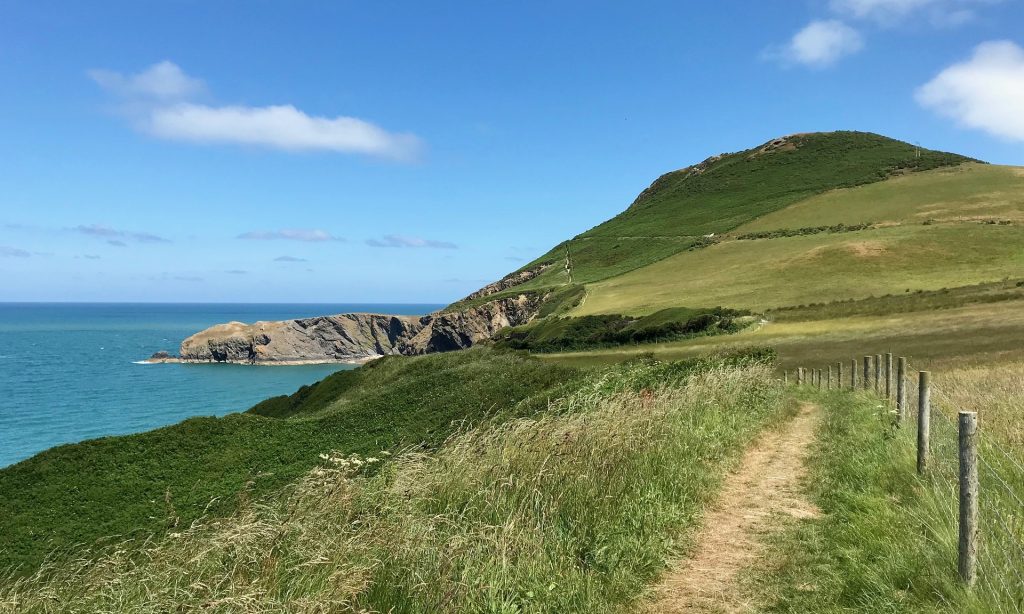
Places to stay in Monknash
Best Western Heronston Hotel & Spa
The Best Western Heronston Hotel & Spa is a wonderful place to stay for either business or leisure travellers alike. The hotel can be found in a more rural setting, but it is still only a half mile from the centre of Bridgend, and it is only a few minutes from Junction 35 of the M4. For more information, click here.
The hotel has 75 non-smoking rooms, ranging from standard to superior to suites, all of which are tastefully decorated. The Ewennys Bar & Grill is the ideal location for a few drinks before dinner, as well as for ordering a quick snack or bar meal.
The Crane Restaurant features a seasonal menu with locally sourced ingredients. The Herons Leisure Club features an indoor swimming pool that is heated, a sauna, a steam room, a spa pool, and a gym.
The Bear hotel
The Bear Hotel has been around since at least the 12th century, but it is perhaps most famous for its role as the inn at which the horses used on the mail route between Cardiff and Swansea were changed. This well-known coaching inn has a long and illustrious past. These It is now a privately owned three-star hotel with comfortable rooms and high-quality home-cooked meals. For more information, click here.
The Great House Hotel
The Great House Hotel is a beautiful, grade II* listed building that dates back to around 1550. It is believed that HRH Queen Elizabeth I gave the building to the Earl of Leicester as a gift, and the Earl of Leicester used it as a hunting lodge at the time.
The Great House Hotel can be found in the charming conservation village of Laleston. It is only a ten-minute drive from the seaside town of Porthcawl and a quarter of an hour’s drive from the city of Aberystwyth.
This hotel has modern amenities as well as traditional mullioned windows, stone archways, flagstone floors, oak beams, inglenook fireplaces, and a dovecote in the south wall. The hotel also offers in-house fine dining. For more information, click here.

